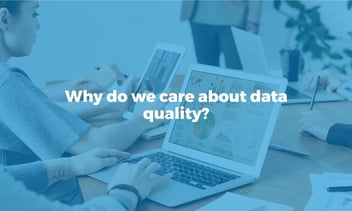This article explores what system integration is and why it has become a requirement for companies. We talk about its benefits, problems and solutions.
As enterprises' IT demands expand and become more complex, system integration is becoming increasingly significant and a premier requirement for business evolution and progress. Investment in system integration is growing steadily and organizations are realizing that having a centralized systems network helps to increase productivity, improve efficiency and add value to customers.
As time goes on, companies require more and more complex technology systems and the demand for solutions that optimize operations and, consequently, the return on investment, is progressively growing. In this sense, system integration is paramount so that organizations can upgrade their production systems and technologies when necessary, increase their productivity and respond to their long term IT necessities.
This is exactly why investment in system integration (SI) has grown so much in the last decade. The market research consultancy Grand View Research published a report in 2019 that pointed out that the system integration market will reach $530 billions in 2025, doubling 2015's amount —$234 billion— in 10 years.
What is System Integration?
System integration is the process of interconnecting all of a company's IT systems, technologies, applications and softwares so that they function as a single system. It is used in both internal and external systems and connects the entire business infrastructure, enabling interoperability between the different tools.
Businesses employ a large number of disparate systems that operate independently, are programmed with different coding and have divergent programming languages and codes. System integration, therefore, acts as an interpreter between the different codes, programming, software and hardware so that data can flow seamlessly and uninterruptedly.
In practice, system integration is also another data integration procedure that enables the convergence of information between all business systems automatically. Without integration, companies would operate in a disjointed atmosphere and information would have to be entered manually into each system, which would increase the risk of technical failures, greatly delay work procedures and routines, and hinder the organic flow of information exchange. Thus, system integration is the key that fits all the pieces of the puzzle together so that the tools function as a centralized network and operate according to a consistent architecture.
On the other hand, the role of system integration is becoming increasingly relevant as the transformation of infrastructures, protocols, formats and technologies advances at a frenetic pace. SI allows businesses to update their tools without having to dispense with or change all the others or break the connection chain. In other words, system integration allows companies to continue operating with their legacy infrastructure while incorporating new technologies, software and applications.
The advantages of system integration: why is system integration relevant?
As already mentioned, businesses are not only working with more and more systems, but also replacing them more frequently. System integration responds to companies' increasing IT demands, making it easier for new systems to be integrated with the already existing business infrastructure. In fact, nowadays, tools and applications are already designed with their future connection with other systems in mind.
However, the great value and the main reason for the effervescent investment in SI is the optimization of business operations. Having a centralized network of systems increases the efficiency of information exchange and workflows and ultimately enhances productivity. It also reduces operating costs, improves tool response time and ensures that information is available when needed.
On the other hand, it increases value for customers, since it upgrades the performance and quality of the products and services. Therefore, it not only contributes to higher productivity, but also has an impact on the quality of the products and services offered by the company.
It also optimizes data-related practices and can lead to other benefits such as:
- Extending systems' lifetime and simplifying new technologies implementation.
- Promoting data security and integration.
- Consolidation and standardization of data stimulating data quality.
- Avoids interruptions and failures in operational and business processes.
- It favors the exchange of information with customers, suppliers and other external members.
- Simplifies data governance and data management.
Problems related to systems integration
There are different methods to integrate systems (API integration, webhooks, ISC, etc.) and multiple ways to carry out the process that vary according to the needs and the number of systems of each company. However, it is not a simple procedure and can cause problems. Some of the most recurrent are:
- Long-term scalability: SI must be carried out thinking about the future and with the evolution and expansion of the infrastructure in mind. Therefore, it is important that the integration is compatible with the scalability required by the business. Otherwise, over time, the integration could involve setbacks and make it difficult to acquire more systems.
- Choosing the wrong tools: If we opt for a tool that is unsuitable for the IT needs of our business, we may experience drawbacks such as extremely slow implementation, inefficient functionality or very high acquisition and maintenance costs.
- Different departmental needs: Within an organization, each business unit uses different systems, applications and softwares. System Integration must have a useful architecture for all departments and standardize data enabling access to all team members.
Until recently, organizations that needed to integrate few systems used EAI (Enterprise Application Integration) platforms. These platforms, however, had very high acquisition costs and ended up being uneconomical. Other companies opt for ETL processes that work efficiently, but when the number of systems increases, their maintenance and evolution can turn into a nightmare.
Nonetheless, the benefits of System Integration outweigh the possible adversities that, by resorting to the right tool, don't need to occur. At Bismart we have been working in system integration for many years. We have had the privilege to help numerous companies from different sectors to implement this type of process, successfully solving its challenges. The key, in addition to having the right technology and using effective methodologies, is to adapt the process to the needs and characteristics of each business.
Our solution, Enterprise Information Integration & Master Data Management, is a unique platform developed with Microsoft SQL Server and based on Power BI. Information oriented, it stands out because of its flexibility —it adapts to the particularities of each system— and long-term scalability. It enables the exchange of business information between systems from a single point of reference, centralizes the management of master data and streamlines the process by minimizing the efforts required and reducing the number of integrations needed. It supports large data volumes and is capable of working in near real-time.
Undoubtedly, the great peculiarity of this solution is that it is specially designed to promote data governance, data quality and data management. EII/MDM includes auditing services for data acquisition and delivery or publication processes, a 360º view of the information lifecycle, incidents notifications, information historification and a dashboard environment to facilitate management for administrators. In addition, it standardizes and consolidates data, thereby strengthening its quality and ensuring its reliability and security, protocols that are increasingly decisive for compliance with current data protection regulations such as GDPR.
System integration and data integration: Where do they meet?
In today's rapidly evolving business landscape, the relationship between system integration and data integration is crucial for the success of organizations.
System integration acts as an interpreter between different codes, programming languages, and hardware, allowing data to flow seamlessly and uninterrupted. It enables the convergence of information between all business systems, ensuring a centralized network and consistent architecture.
On the other hand, data integration focuses on the consolidation and standardization of data, promoting data quality, security, and data governance.
By combining system integration and data integration, companies can optimize operations, enhance productivity, and improve the quality of products and services. With the increasing demand for complex technology systems, investing in system integration becomes paramount for organizations to stay competitive and achieve long-term profitability.
System Integration tools and processes
System integration tools and processes are essential for connecting various software, hardware, and services within an organization to ensure seamless data flow and communication. Here are some commonly used system integration tools and processes:
-
Enterprise Service Bus (ESB): ESB is a middleware tool that facilitates communication and integration among various enterprise applications and services. It acts as a central hub to route messages, transform data, and manage communication between different systems.
-
Application Programming Interface (API): APIs are sets of rules and protocols that allow different software applications to communicate with each other. They enable data exchange and functionality sharing between systems.
-
Web Services: Web services are a type of API that use standardized XML or JSON formats over HTTP/HTTPS protocols to facilitate communication between applications running on different platforms and programming languages.
-
Message Queues: Message queuing systems, such as Apache Kafka or RabbitMQ, enable asynchronous communication between applications by allowing messages to be placed in queues and processed when the system is ready.
-
Data Integration Platforms: Tools like Talend, Informatica, and Microsoft Integration Services (SSIS) help in integrating data from multiple sources, performing data transformations, and loading it into target systems.
-
Extract, Transform, Load (ETL) Tools: ETL or ELT tools like Apache NiFi, Microsoft SSIS, or Talend extract data from various sources, transform it into a suitable format, and load it into a data warehouse or target system.
-
Middleware: Middleware is software that sits between different systems or applications and facilitates communication, data transfer, and integration. It includes ESBs, message brokers, and integration servers.
-
Point-to-Point Integration: This is a traditional integration approach where individual connections are established between applications or systems. However, it can become complex and difficult to maintain as the number of connections increases.
-
Service-Oriented Architecture (SOA): SOA is an architectural approach where applications are designed as a collection of loosely coupled, reusable services. These services can be invoked and combined to achieve specific functionality.
-
Microservices Architecture: In contrast to monolithic applications, microservices architecture decomposes applications into smaller, independent services that can be deployed and managed separately, making integration more flexible.
-
Enterprise Application Integration (EAI): EAI solutions help organizations integrate various applications and systems to enable seamless data exchange, business process automation, and coordination.
-
API Management Platforms: These tools provide a centralized platform to manage, monitor, and secure APIs, making it easier to control access, usage, and versioning of APIs.
-
Cloud Integration Platforms: With the rise of cloud services, tools like Azure Logic Apps, AWS Step Functions, and Google Cloud Dataflow enable seamless integration between on-premises and cloud-based applications.
-
Data Virtualization: Data virtualization tools allow data to be accessed and integrated from various sources without physically moving or duplicating it, providing a unified view to users and applications.
- Microsoft Fabric: Microsoft Fabric is a comprehensive solution developed by Microsoft that aims to address the challenges related to system integration and data management. With the increasing complexity of technology systems, organizations need a reliable and efficient tool to seamlessly connect various software, hardware, and services. Microsoft Fabric provides a centralized platform for communication and integration among different enterprise applications and services. It acts as an interpreter between different codes and programming languages, ensuring a smooth flow of data and consistent architecture.
-
Data Synchronization Tools: These tools synchronize data across multiple systems, databases, or applications to ensure consistency and accuracy.
-
Real-Time Integration: Real-time integration tools enable instant data synchronization and communication between systems, ensuring the latest information is available across the organization.
-
Business Process Management (BPM) Suites: BPM suites combine integration capabilities with process modeling and automation features, streamlining business processes and ensuring smooth data flow.
-
Custom Integration Solutions: Organizations may build their own custom integration solutions using programming languages and frameworks tailored to their specific needs.
The choice of tools and processes depends on the organization's requirements, existing infrastructure, and the complexity of the integration tasks.
Conclusion
System integration, therefore, is now a requirement for the long-term competitiveness, progress, productivity and profitability of organizations. Moreover, it should not be understood as a stand-alone process, but as a process linked to data governance, quality, security and control. Only in this way, SI will be really fruitful, bring the expected results and promote a data-driven business culture.
If you have any questions or would like to discuss your case with one of our experts, do not hesitate to reach us!



